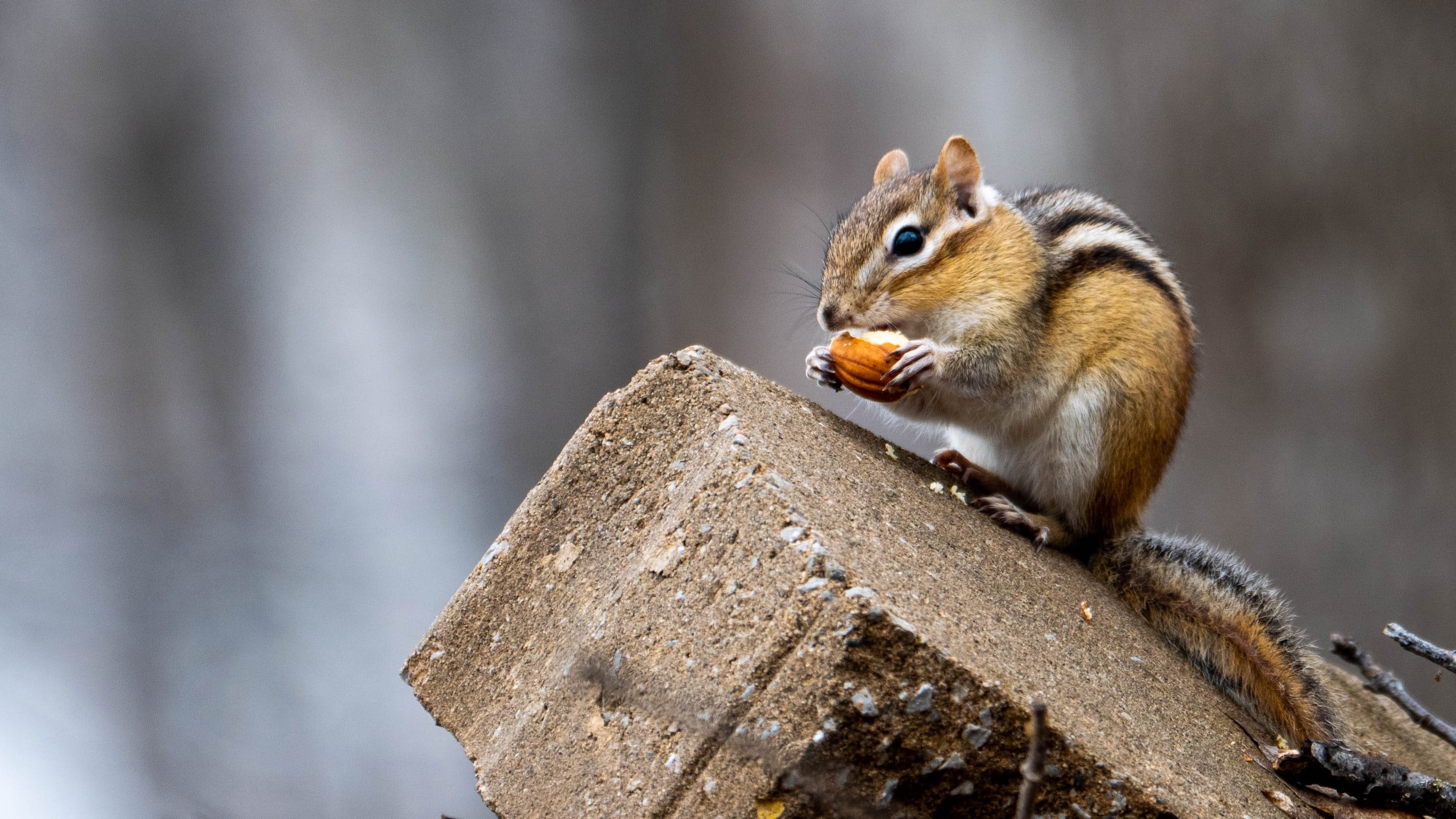
Chipmunk Control
“Chip-wrecked”
The eastern chipmunk is found in great abundance throughout New Hampshire; in both urban backyards as well as rural forests of the Granite State. Chipmunks create elaborate burrows with extensive networks of tunnels and entrances that are used for shelter and storing food for the winter months. They can often be observed foraging around patios, gardens, flower & mulch beds, and areas with acorn-producing trees.
Monadnock Pest & Wildlife deploys several tactics for managing chipmunk conflict - both with structural non-lethal exclusionary methods as well as physical removal of individuals. With over a decade of wildlife handling experience, we’re the premier chipmunk management authority in New Hampshire.
Appearance:
Chipmunks tend to have reddish-brown fur on their back and sides, with white fur on the stomach. Two white and black stripes on thes sides and one prominent black stripe on the back are most common. The eastern chipmunk also has light stripes above and below the eyes. Pouched cheeks used to store and carry food are a common identifiable trait. Some melanistic individuals may be all black - creating some confusion with residents. Chipmunks are typically 8 to 10 inches long, with flattened furry tails. These traits differentiate them from other common commensal species such as rats, mice, and voles.
Behavior, Habitat & Diet:
A chipmunk’s diet is typically made up of nuts, acorns, seeds, mushrooms, garden fruits & berries, and sometimes corn. They will also readily eat insects, bird eggs, snails, and small mammals like young mice. A common conflict issue with chipmunks revolves around gardens and ornamental beds, where they will impact strawberries, tomatoes, and tulip bulbs, to name a few. They will also readily scavenge at bird-feeders.
Chipmunks tend to live in underground burrows in open forests or at the edges of woodlands. They are common in bushy and rocky areas near mulch beds, stone walls, houses, and other buildings in both urban and rural settings throughout New Hampshire.
As mentioned, chipmunks are burrowers - living in extensive tunnel networks underground. These systems can be elaborate, and may pose damage to walkways, patios, lawns, and ornamental beds around homes. It is not uncommon for chipmunks to access homes via poor foundations or dirt floor cellars - although chipmunks rarely live inside homes long-term. They do hibernate, and spend most of their time foraging for food stores to last over winter in their burrows. They tend to be most active Spring, Summer, and Fall. They may emerge from hibernation in winter during extended periods of warm spells.
Nuisance characteristics:
Common chipmunk issues include (but are not limited to):
Harborage inside dirt crawlspaces or deterriorated foundations.
Damage to lawns, walkways, and patios as a result of burrowing.
Damage to irrigation systems and in-ground control boxes as a result of burrowing.
Damage to garden and fruit crops.
Damage to flower gardens and bulb plantings.
Having trouble with chipmunks? If you live in southern New Hampshire, we’re ready to assist - contact Monadnock Pest & Wildlife today for a worry-free inspection and estimate to assist with evicting individual chipmunks from your property!
Read more about Chipmunks and Rodents on our Pest Blog:
Give us a call:
(603)-784-5828
Not much of a phone talker?
Send us a message and we’ll respond to your inquiry shortly.
We check our email messages promptly!



Whether its soiled insulation posing health risks and impacting coveted R-value for home heat efficiency, hazardous electrical wiring gnawed by persistent rodents, or structural damage caused by wood-destroying and boring insects; what you can’t see above you may pose serious problems.